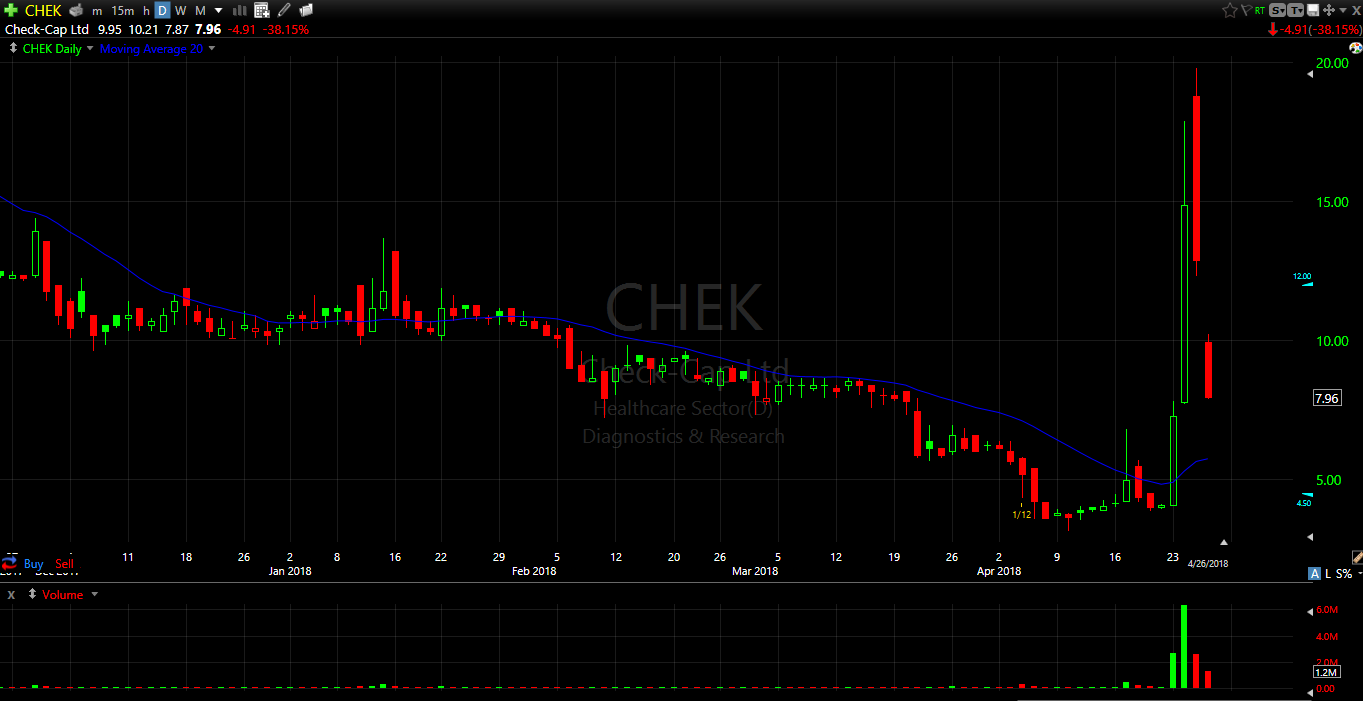It’s approaching earnings season, one of my favorite times of the trading year. Every day there are dozens of stocks gapping up and gapping down in reaction to quarterly earnings reports. This means one of my favorite, go to setups is there to play almost every day: Earnings breakdowns.
There has also been serious weakness in the overall markets, so there have been numerous short selling opportunities outside of earnings breakdowns. In order to profit in the stock market this year you have to know how to short sell correctly. Here are 5 key things you need to know in order to short sell successfully in the present market conditions.
Be Cautious With Leverage When Shorting
You cannot get stubborn when short selling, especially if you are using leverage. Leverage is not necessarily a bad thing to use if you can manage your risk correctly. However, with short selling, you can theoretically lose more than what’s in your trading account if the stock keeps going up.
A stock can go up more than 100% from your entry, and that means you can lose more than what’s in your account and go in debt to your broker. If you are using leverage, the stock doesn’t even need to go up 100% for you to lose your whole account. Take a look at the chart of a recent runner CHEK:
If you started shorting at $8 a few days ago and didn’t cut the loss, you would have lost your whole account and then some when it went to $18+. Yes, it’s POS company that will most likely retrace back to where it came from.
But if you get stuck on the front side and don’t cut your loss, it doesn’t matter how bad the company is. The message is clear: You cannot afford to get stubborn when shorting. Small losses are your friend and are what allow you to live to fight another day and potentially make a big trade.
Pay Attention To The Catalyst
If you are looking to short sell a stock gapping down, you have to know what the catalyst is. Personally, earnings is my favorite catalyst because it usually has the cleanest follow through and the best trends. I know when a stock gaps down on earnings on a clean daily chart and gives me a setup, there is a high probability of the trade working out.
You want to be trading catalysts you are familiar with, and know that they usually follow through to the downside when they occur. For example, stocks gapping on M&A (Merger & Acquisition) news rarely follow through, and are usually just choppy. You need to study how stocks react to certain catalysts to assign the probability of a potential trade working out or not.
Know If Short Sale Restriction is On
Short sale restriction (abbreviated as SSR) can make it difficult for you to get an entry on a stock gapping down. SSR is turned on a stock when it goes down 10% or more from yesterday’s closing price. When SSR is turned on, you cannot fill your short by taking liquidity and hitting the bid.
You have to put your order on the offer and wait for the market to uptick to fill you. This means you have to wait for the stock to spike a bit in order to fill your short position on a stock that has SSR turned on. You have to be patient and preplan your entries in order to get filled. You cannot short sell breakdowns on stocks with SSR, because it will be very unlikely you will get filled.
Pay Attention To Trend of Overall Market
Most stocks that do not have a catalyst on the day will follow the trend of the overall market. You should always have the SPY chart up when you are trading high beta stocks, like FB, BABA, and NVDA for example. This year these stocks have had some huge intraday range because there has been exceptionally high volatility in the markets this year.
They also follow the overall market trend very closely. You should always avoid shorting these stocks when the overall market is strong, and vice versa when it is weak. In volatile markets like the one we are in, stocks will always bounce higher and dump lower than you expect.
Know Your Stock’s Average True Range
You should always know this when you are looking to put on a position of a stock. Stocks that are trending down reacting to a negative catalyst will often trade outside of their normal ranges. But if the ATR of a stock is 1$ and it has already moved 5 points that day to the downside, it is not very probable it will continue going down.
Stocks that have SSR will reverse quickly so if you get caught chasing to the short side you can be underwater very quickly. You need to know the normal range of your stock on a typical day so you can know when you have meat on the bone for a potential trade. A stock like General Electric as a tiny range, and even on earnings it barely moves more than 50 cents a day. There is no range to capture in stocks like these.
6 Seats Left in Our Next Live Trading Bootcamp!
Our next Live Trading Bootcamp is around the corner! Learn from experienced stock traders have been trading for over 2 decades, and navigated the last 2 bear markets. Only 6 seats left, and space will fill up fast!
Click here to Save Your Seat for Our Next Trading Bootcamp!


